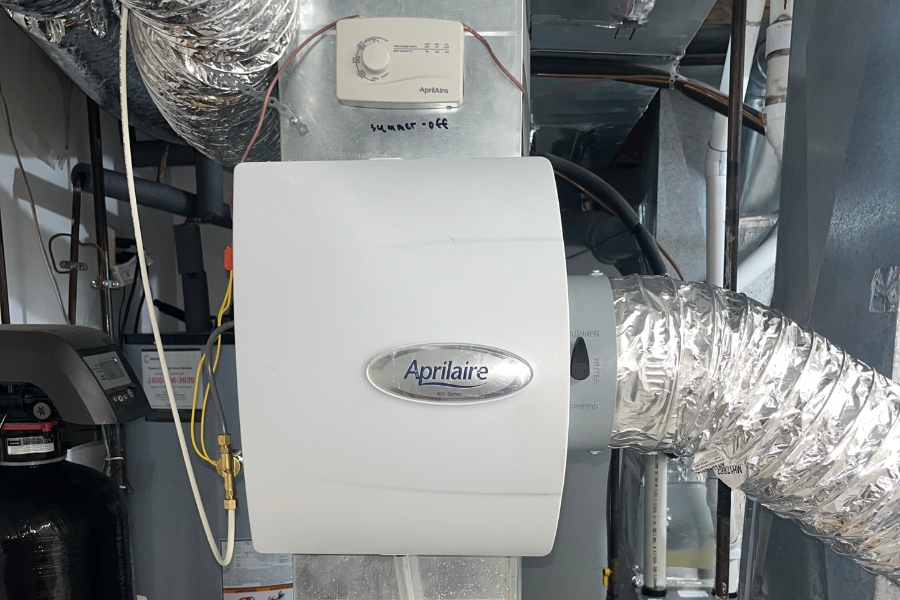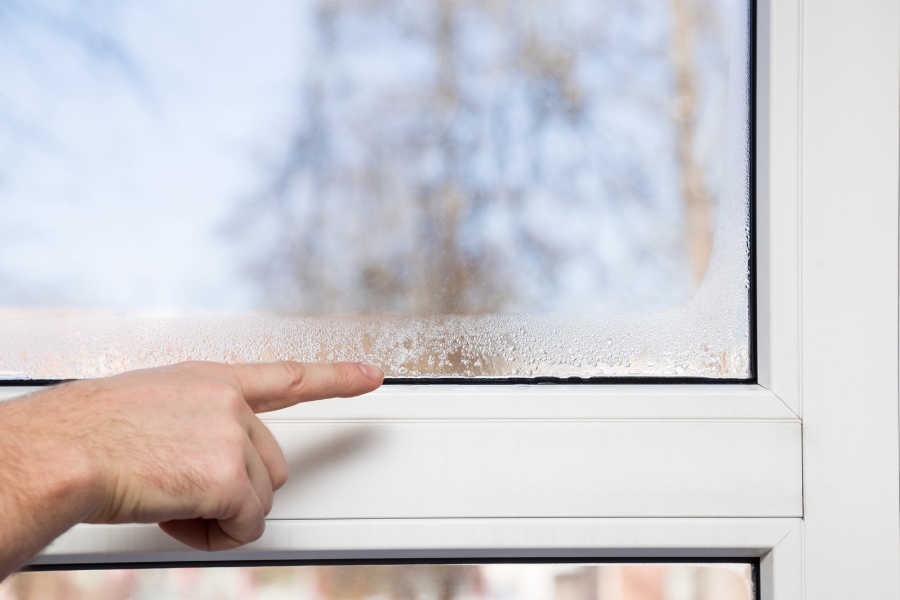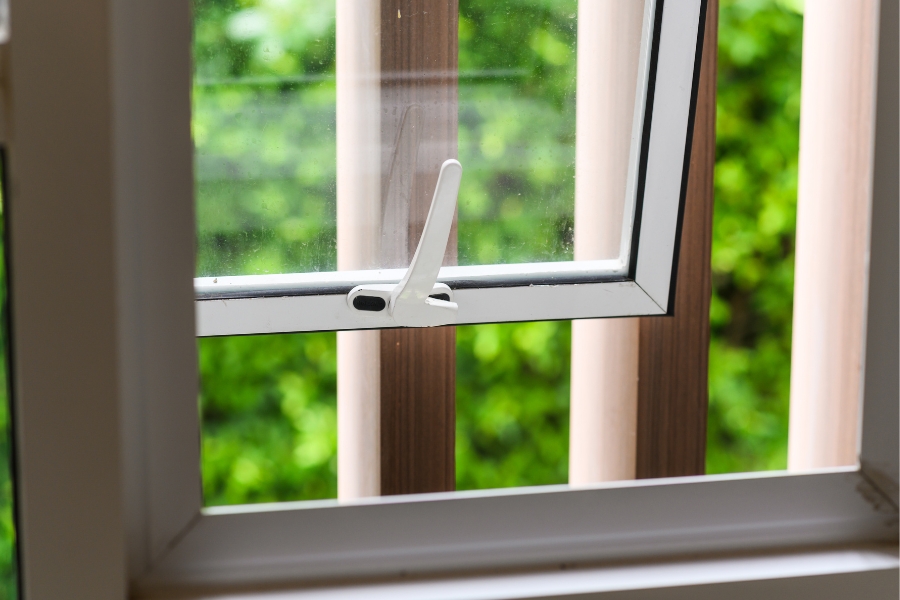Have you ever walked into a room that feels hot and sticky, even with the air conditioner running? You’re not imagining things, and humidity could be your culprit. Nothing is worse than coming home on a hot summer day to weird feelings of stickiness and sweat after your AC promised to deliver a cool and dry environment, free of moisture. But, those high moisture levels can mess with its ability to do what you want, making your home less than comfortable. If you start by learning how humidity affects AC performance, you’ll find that humidity is easier to tackle than you think.
We can help you understand humidity’s effect on your AC and discuss ways to solve it on your own before racking up any unnecessary costs for you and your home.
How AC Units Control Humidity
Before we jump into how exactly humidity affects AC performance, it’s crucial that we cover this topic as you might be thinking: doesn’t AC get rid of moisture? And the answer is: yes! Your AC isn’t just about blowing cold air. It plays a big role in taking away or maintaining a normal level of humidity in your home.
Here’s how it works: When the warm, moist air passes over the cold evaporator coils in your AC unit, the moisture condenses and gets collected in a drip pan, which then drains outside. This process naturally reduces the amount of moisture in the air, making your space feel more comfortable.
In short, your AC acts like a dehumidifier while it cools. But when uncontrollable circumstances like outdoor humidity are extremely high, your system has to work harder to pull moisture away from the air. This added workload doesn’t just affect your comfort but it affects how well your AC performs overall.

Humidity’s Effect on AC
Now let’s get to the heart of the matter: how humidity impacts your air conditioning system. When there’s too much moisture in the air, your AC has to run longer cycles to remove that extra water before it can actually cool your home. This can lead to:
- Uneven Cooling: Your AC is struggling to maintain a consistent temperature. You might notice one room that’s burning hot and another that’s freezing cold.
- Increased Energy Use: If your AC needs more cycles to cool your home, it’s taking more energy. This leads to higher utility bills without any real increase in comfort.
- Reduced Efficiency: High humidity makes your air conditioner less efficient because it’s fighting moisture instead of focusing on cooling.
- Damage Over Time: If your AC is stressed from constantly pulling, it’ll wear down AC components faster, shortening the lifespan of your AC unit.
So yes, humidity affects AC performance, and it’s not just about comfort. It’s also about cost, efficiency, and long-term system health.
Causes of High Humidity Indoors
High humidity doesn’t always come from the weather alone. Several sources contribute to increased indoor moisture:
- Outdoor Climate: Especially in regions with hot, humid summers, outside air brings in more moisture.
- Daily Activities: Cooking, showering, and even breathing add moisture to the air.
- Poor Ventilation: Without proper airflow, moisture stays trapped inside your home.
- Leaks or Water Intrusion: Plumbing issues or roof leaks can introduce unexpected moisture into your indoor environment.
Understanding these causes helps you identify where to focus your efforts in managing indoor humidity. Oftentimes, it may be easier to fix on your own than you think!
Signs Your AC Is Struggling With Humidity
If you don’t feel it immediately and want to know for sure if your AC is struggling with the humidity levels indoors, here are a few red flags to watch out for:
- Stuffy, Heavy Air: Even with the AC on, your home feels muggy, musty, or “thick”.
- Condensation on Windows: If you can use the fogged-up windows of your home to draw a smiley face, it’s most likely a sign that your home is carrying too much moisture.
- Musty Smells: Mold and mildew thrive in damp environments. If your home smells musty, especially in corners or near vents, humidity could be the cause.
- AC Always Running: If your system never seems to shut off, it might be working overtime to tackle moisture instead of just cooling.
These signs are your system’s way of saying, “I need help!”. So, you can either fix it yourself by continuing to read or contact a local AC repair company to help you figure out what’s wrong with your AC.

Addressing High and Low Humidity in Your Home
We know we’ve been making humidity seem like the bad guy so far, but the end goal isn’t to get rid of the humidity in your home entirely. Too little moisture can be just as problematic as too much. The ideal indoor humidity level is between 30% and 50%. To hit that sweet spot:
- Use a Dehumidifier: Especially during summer months, a whole-home or portable dehumidifier can help reduce excess moisture and ease the burden on your AC.
- Ventilate Smartly: Open windows when it’s dry, use exhaust fans in kitchens and bathrooms, and make sure your home has good airflow at all times.
- Seal Leaks: Check for gaps around windows and doors where humid air can sneak in. Don’t let cool air escape and humid air enter your home when humidity levels are high outside.
- Monitor with a Hygrometer: This simple device measures indoor humidity so you know exactly when to act. It tells you the amount of water vapour in the air as a humidity level percentage.
And remember, during colder months, indoor air tends to become drier. In those cases, installing a humidifier near you can prevent issues like dry skin, static electricity, and discomfort, all while helping your heating system run more efficiently.

How Different Seasons Change Humidity Levels
As the summer weather is slowly creeping up, it’s important to note that humidity might be at its peak. It changes with the seasons, and each time of year brings its challenges, which is why the conversation on high humidity is important, especially during the summer. Here’s what you can expect from each season:
- Summer: High temperatures mean more evaporation, leading to sticky, humid conditions. Your AC has to work double duty, removing moisture and lowering temperatures.
- Fall & Spring: These transitional seasons often bring mixed humidity levels. It’s a great time to adjust settings on your thermostat or smart dehumidifier to keep things balanced.
- Winter: Cold air holds less moisture, so indoor air becomes drier. Using a furnace or heater can make the problem worse by further drying out the air.
Being proactive throughout the year gives your system a boost in confidence so it isn’t caught off guard by sudden humidity spikes or drops.
Tame Humidity in the Summer
Humidity plays a bigger role in your home’s comfort and your AC’s performance than most people realize. High moisture levels can lead to inefficient cooling, higher energy bills, and unnecessary strain on your equipment. By understanding how humidity affects AC performance, you’re taking the first step toward a more comfortable and energy-efficient home. Don’t let humidity dictate how your home feels. Stay ahead of the issue – your AC will thank you (and so will your wallet).
Keep cool, stay dry, and enjoy the comfort of a well-balanced indoor environment!